Method
1, Before treatment
Before the treatment, the surface has a honeycomb damage with a depth of 0 to 20 mm or less.
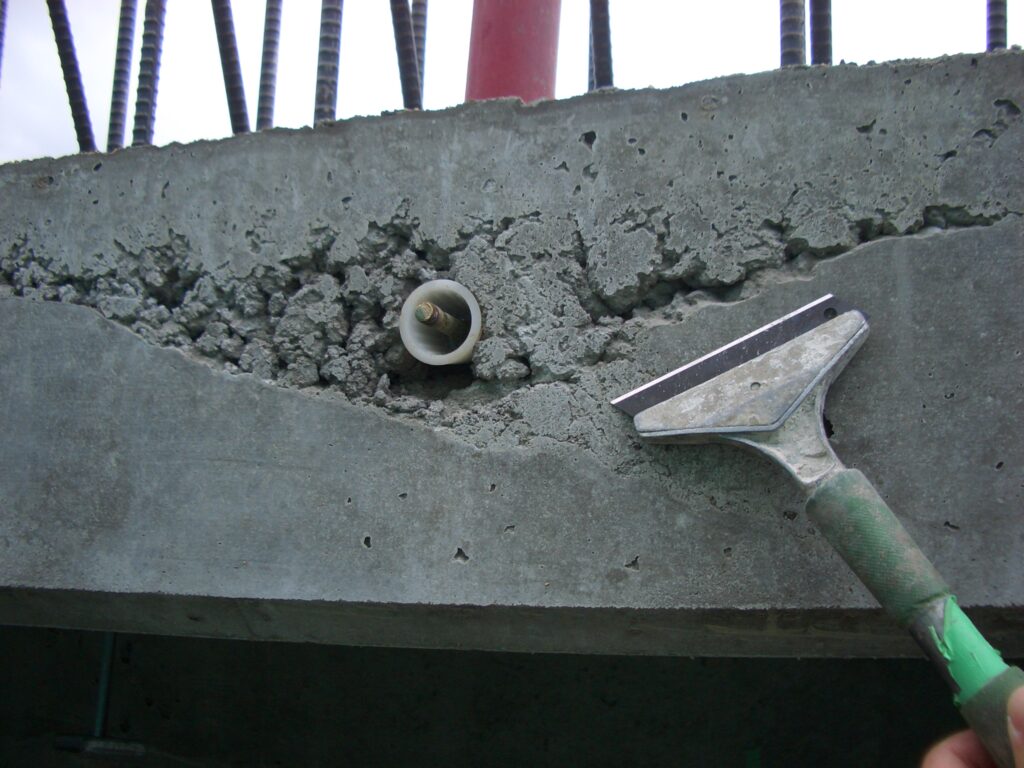
2, Applying the base
Moisten with cement primer and apply Repair Resin. Apply slightly higher than the surface, as you will scrape later in the procedure.
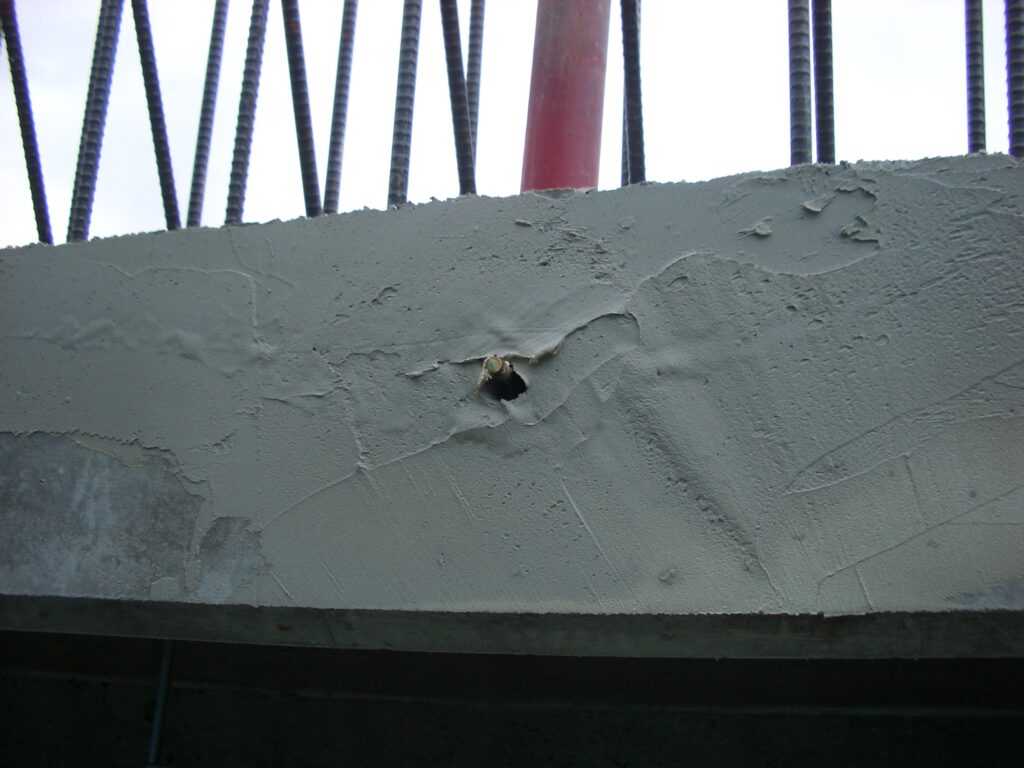
3, Scraping
When it starts hardening, scrape off the excess material with a scraper. If the repairing surface is large, wait until the material is completely dry, then grind with a Level Grinding Wheel #80 for the best result.
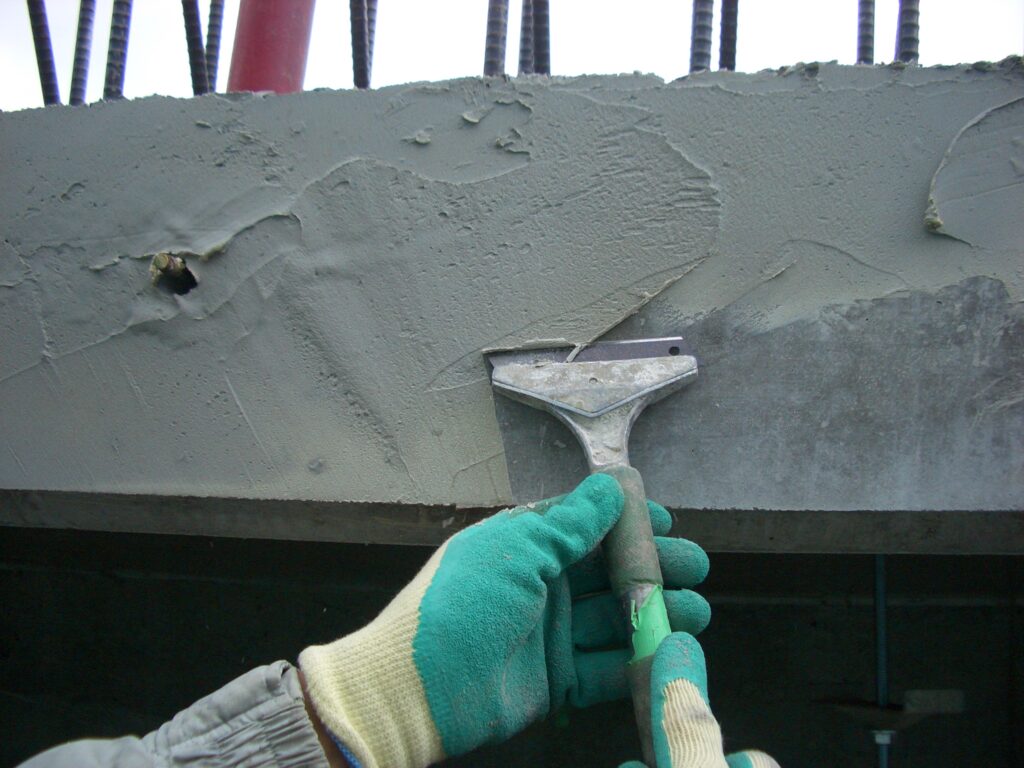
4, After scraping
How the surface should look after 3.
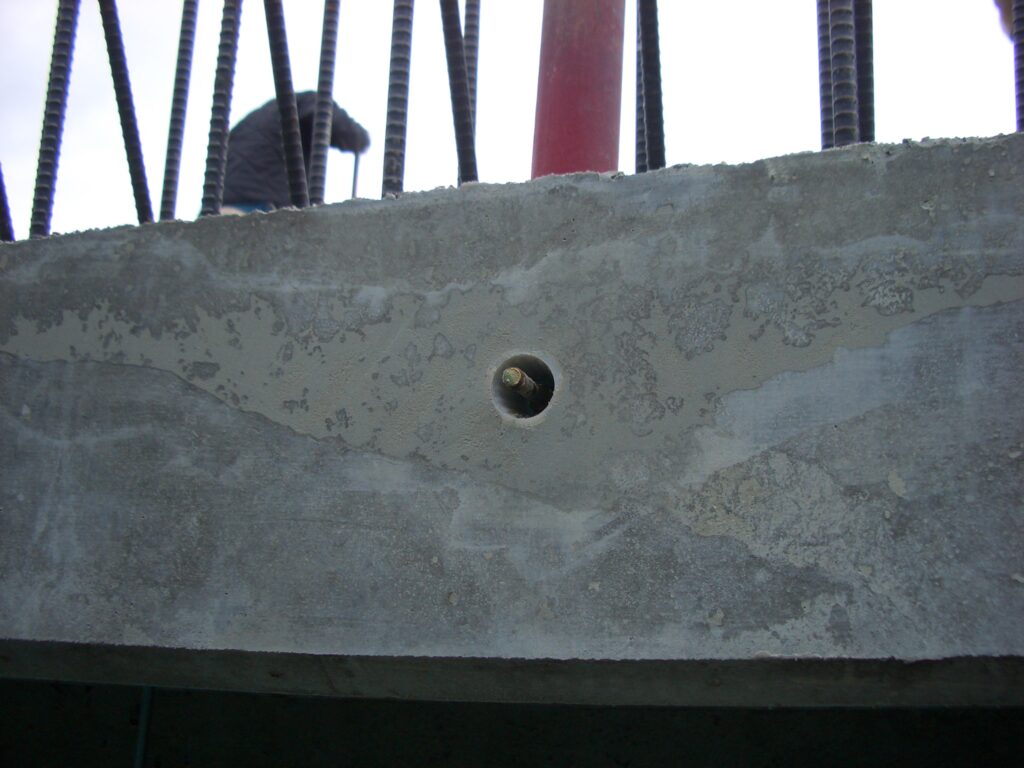
5, Base adjustment
When the material is throughly dry, apply a thin layer of cement primer first, then apply a thin layer of C Repair Lining with a trowel. *This process is for preventing efflorescence to occur, blurring the border, and for the pigment to show better.
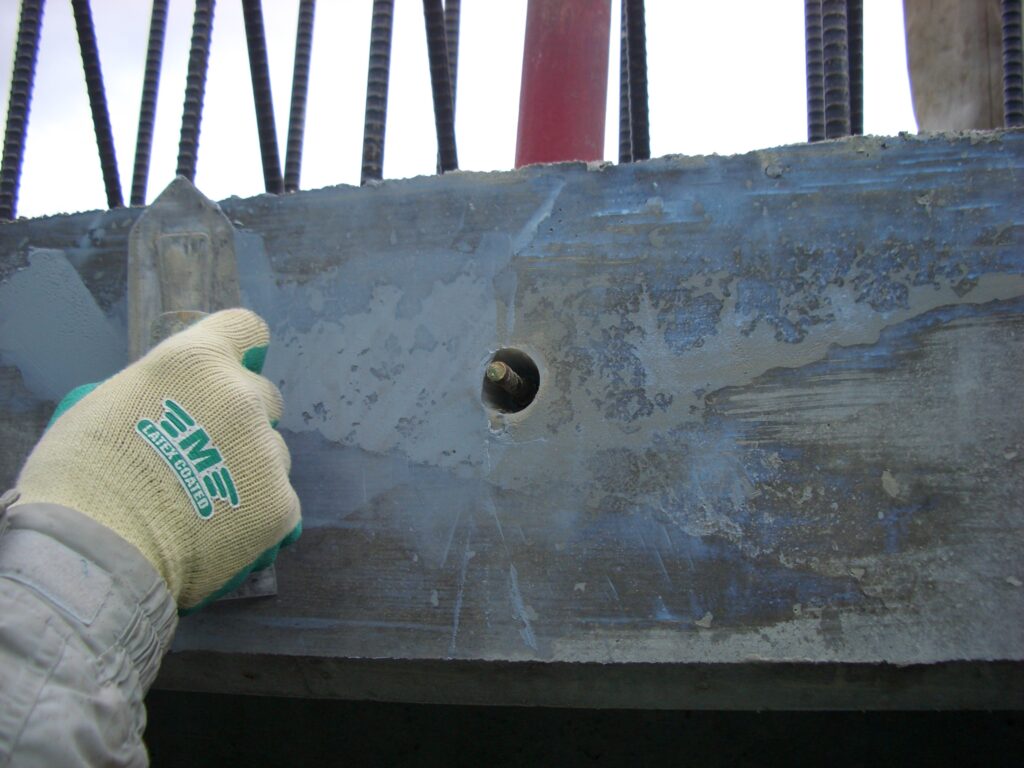
6, Scrubbing
When the material is dry, scrub with #600 sandpaper to blur the border as much as possible.

7, Color adjustment
Spray C Repair Color a small amount at a time, to blur the border of the base and to adjust the color. *To create the best color, mix with Tone Color or another C Repair Color, and try to match the lighter colored parts of the surface.colored parts of the surface.

8, Adding patterns
Prepare several types of tone colors diluted with water, and add patterns little by little using a pattern pad.

9, Finished look
Scrub with #600 sandpaper as needed. When it looks natural, the procedure is completed.
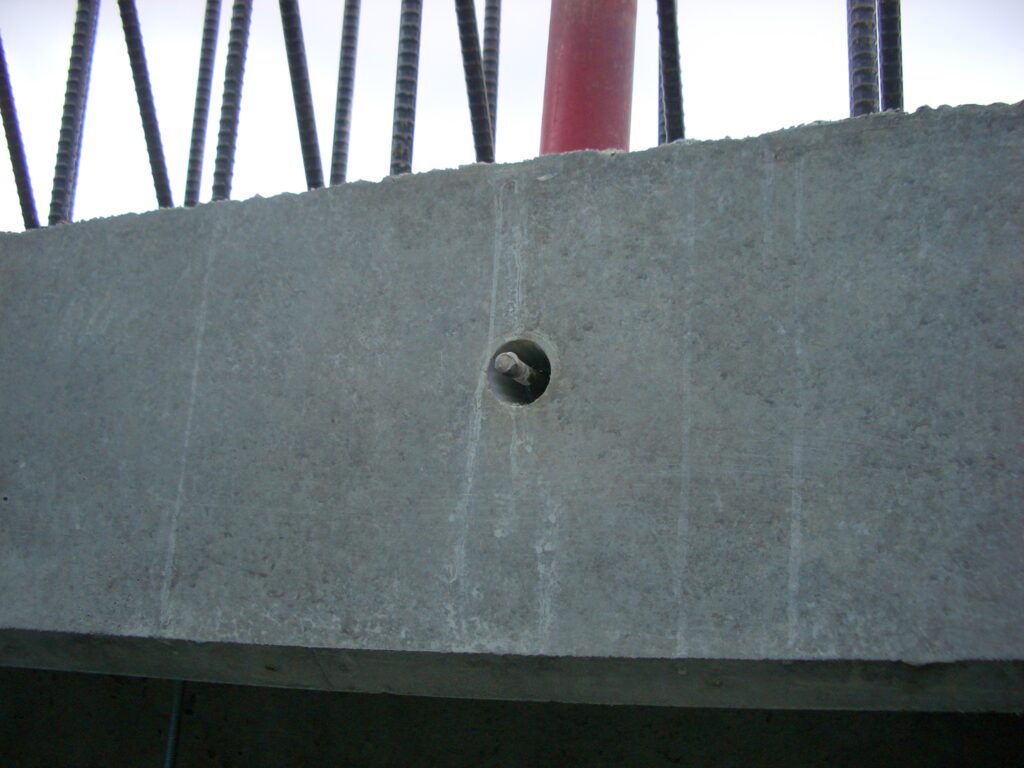

Tools to prepare
- Metal trowel for lining materials
- Metal trowel
- Bowl
- Scraper
- Waterproof sandpaper #600
- Level Grinding Wheel #80
- Small bucket
- Brush
- Wiping cloth
- Air compressor
- Air hose
- Air gun
- Pattern Pad
Materials to prepare
- Repair Resin
- C Repair Lining
- C Repair Color
- Tone Color
- Cement primer(Royal W21 diluted 20 times with water, etc,)
- Water
Notes
- All Repair Resin products are pre-mixed and only use water for kneading. Please note that the curing time and color may differ if any adhesives are mixed.
- Once it’s mixed with water, please use it all. Re-watering or kneading once curing has started may cause cracks and poor adhesion.
- Because it’s cement-based, it is subject to weathering and moisture absorption. Please store with care and use as soon as possible. (The 5kg inner bag is heat-sealed to improve shelf life. Please use the rubber band attached for sealing any leftover products.)
- When repairing, remove the excess materials of the surface beforehand with a hammer, chisel, scraper, etc, and clean it. If the mold releasing agent remains on the surface, it’ll peel off easily. Use a brush to scrub the surface and moisten it with water for the best results.
- Please be careful when handling a scraper or a metal trowel, as they may cut your hand.
- Please read the instructions and notes of C Repair Lining and C Repair Color.
- After adding the Mixing Liquid into C Repair Color, please use it all within 24 hours.
- Cover and protect the area where you don’t wish to spray paint beforehand.
- If it adheres to any unwanted area, wipe it off with a wet wiping cloth.
- Please make sure to mix C Repair Color thoroughly before use. If it’s not fully mixed, it may cause unevenness.
- Spray C Repair Color little at a time in thin layers. If you spray too thickly at once, it may drop, and the finished look will not look as good. Please repeat the process of “Spray → Dry → Spray” until the surface is fully covered.
- When adding patterns, tap lightly and inconsistently according to the surrounding patterns.
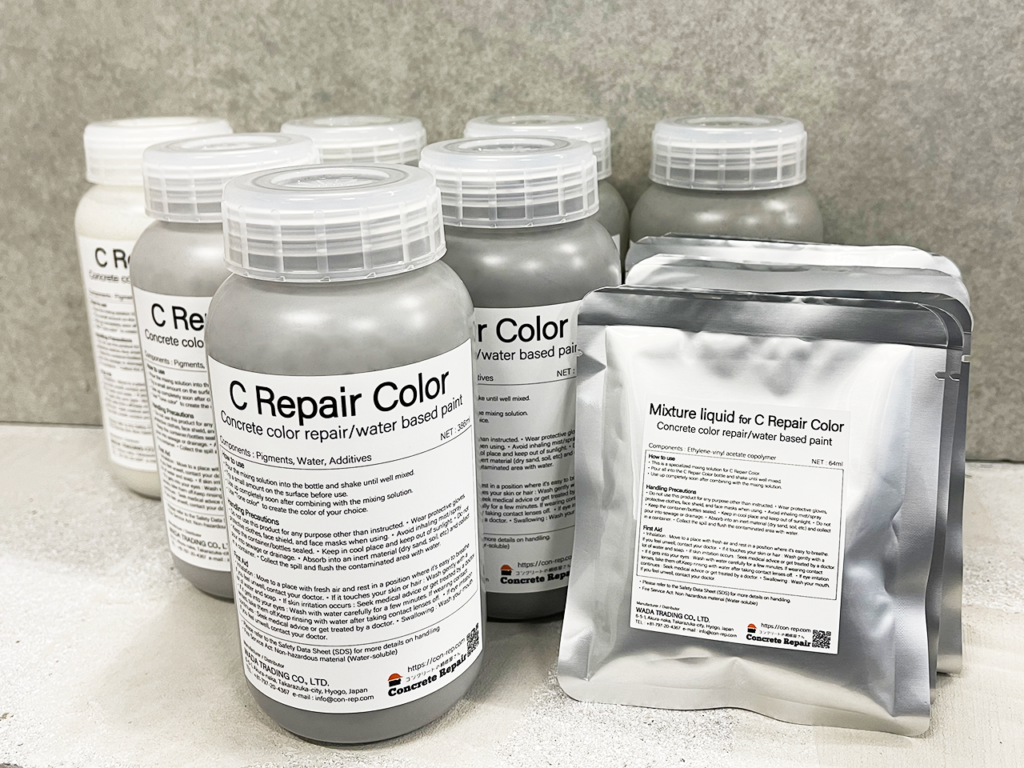

Medium Hairstyles
I simply couldn’t leave your web site prior to suggesting that I extremely loved the standard information a person provide in your visitors? Is gonna be again regularly in order to investigate cross-check new posts